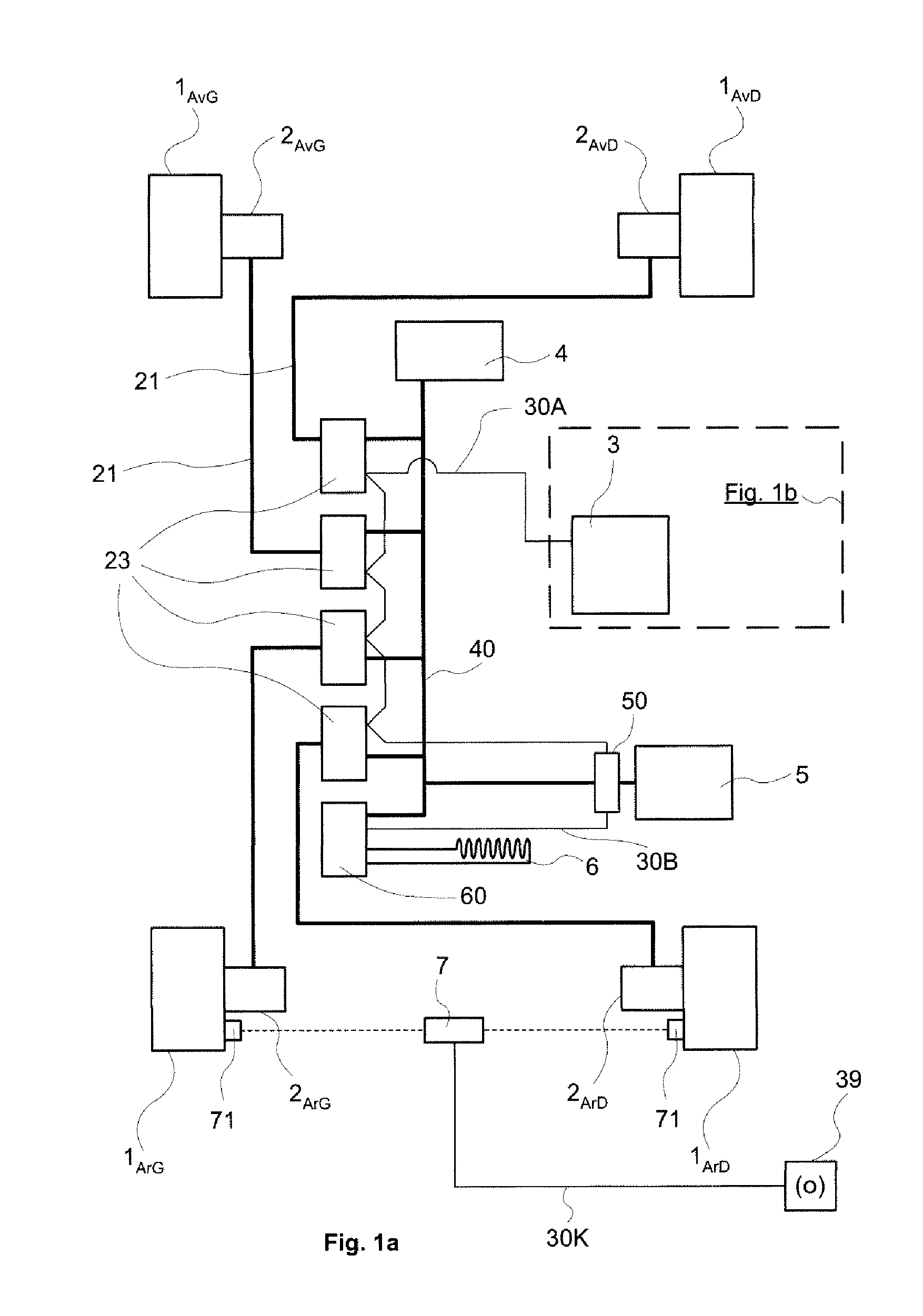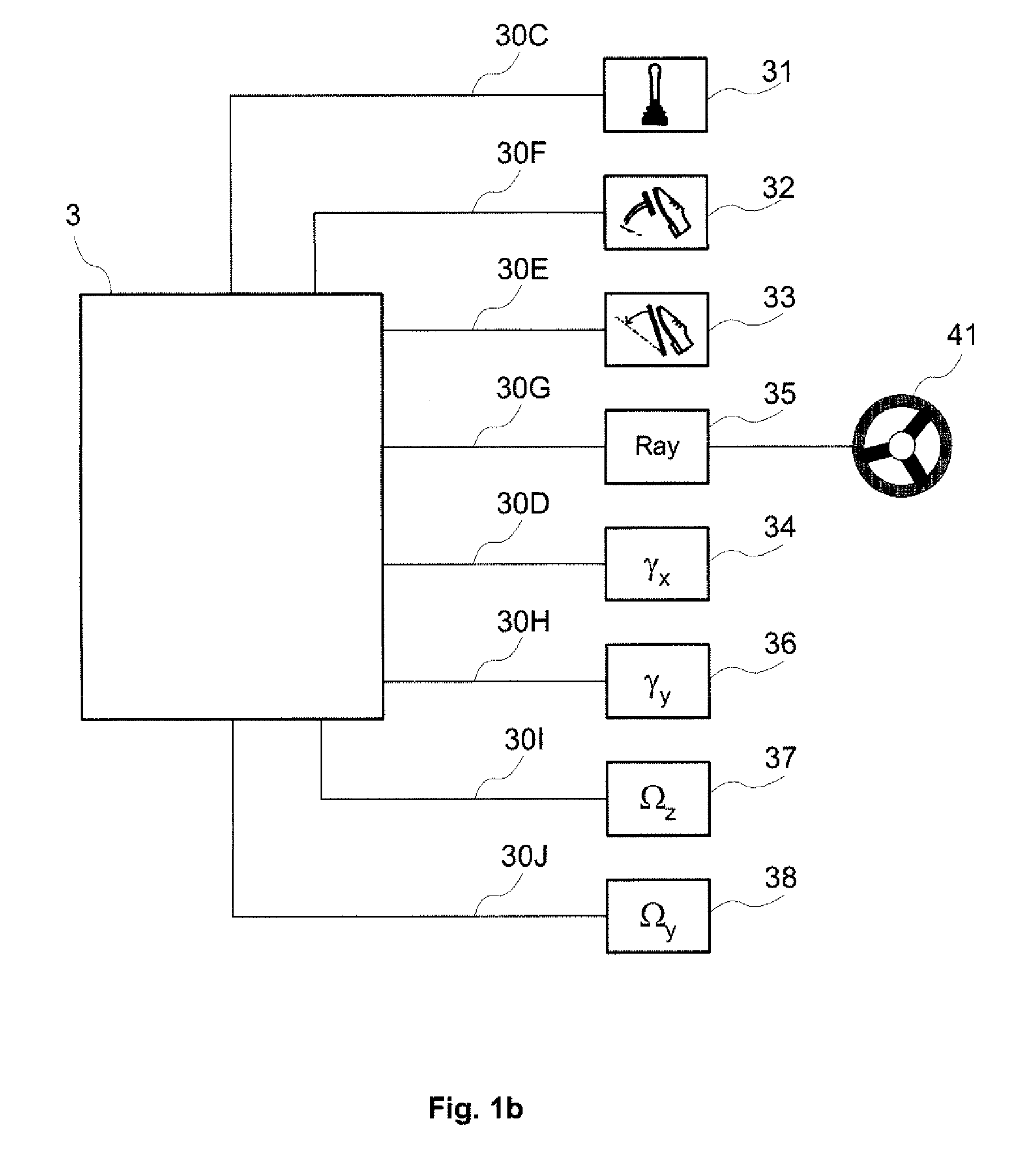System for controlling a vehicle with determination of the speed thereof relative to the ground
a technology of a vehicle and a speed determination, applied in the field of land vehicles, can solve the problems of inability to monitor the behaviour of the vehicle by the system, the proposed extrapolation technique is unsuitable for the monitoring of the vehicle behaviour by the system, and the measurement from the accelerometer is affected by errors, so as to achieve the effect of reliable estimation of the linear speed of the vehicl
- Summary
- Abstract
- Description
- Claims
- Application Information
AI Technical Summary
Benefits of technology
Problems solved by technology
Method used
Image
Examples
Embodiment Construction
[0050]FIG. 1a diagrammatically represents a vehicle with four wheels 1AvG, 1AvD, 1ArG and 1ArD. The wheels are denoted 1AvG for the front left wheel, 1AvD for the front right wheel, 1ArG for the rear left wheel and 1ArD for the rear right wheel. Each wheel is equipped with an electric machine that is mechanically coupled to it. The electric machines 2AvG, 2AvD, 2ArG and 2ArD can be seen. Hereinafter, the indices specifically designating the position of the wheel 1 or of the electric machine 2 in the vehicle will not be repeated when it adds nothing to the clarity of the explanation. The traction electric machines 2 are three-phase machines of self-controlled synchronous type. They are each equipped with an angular position sensor of resolver type 11 (FIG. 3) incorporated behind the machine and are each controlled by a respective electronic wheel control module 23 to which they are connected by electric power lines 21.
[0051]The electronic wheel control modules 23 are designed to cont...
PUM
 Login to View More
Login to View More Abstract
Description
Claims
Application Information
 Login to View More
Login to View More - R&D
- Intellectual Property
- Life Sciences
- Materials
- Tech Scout
- Unparalleled Data Quality
- Higher Quality Content
- 60% Fewer Hallucinations
Browse by: Latest US Patents, China's latest patents, Technical Efficacy Thesaurus, Application Domain, Technology Topic, Popular Technical Reports.
© 2025 PatSnap. All rights reserved.Legal|Privacy policy|Modern Slavery Act Transparency Statement|Sitemap|About US| Contact US: help@patsnap.com



